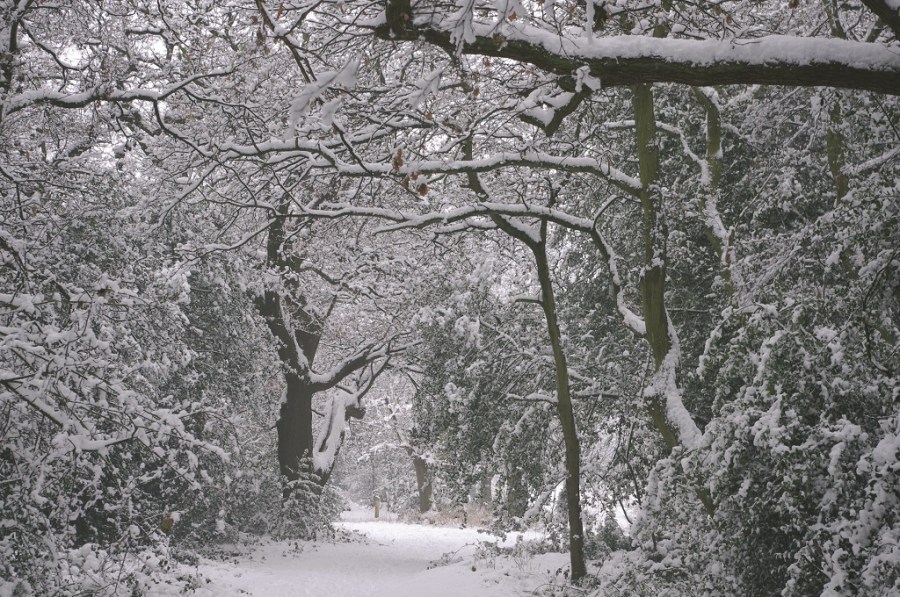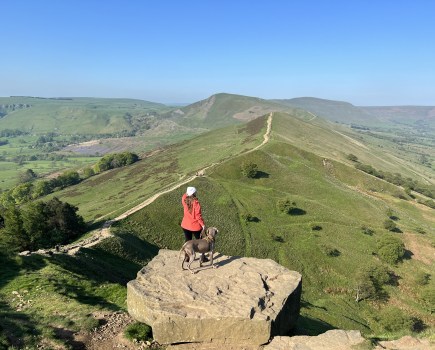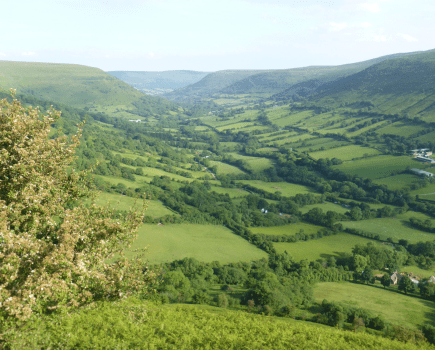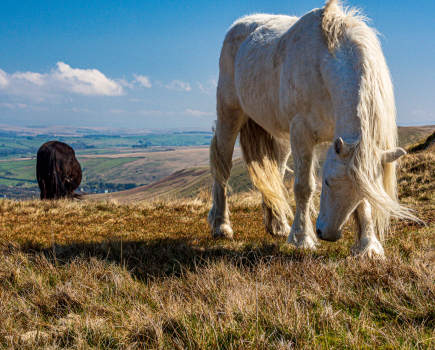An easy distance it may be, but Epping Forest is full of drama and intrigue, as author of the new Cicerone guide Walking in Essex, Peter Aylmer reveals
1932 AND THE Kinder Tespass, we all know; 1864 and Thomas Willingale lopping timber? Possibly not. But take this walk through 15 miles of access land on London’s eastern fringes, and you’ll be mightily glad he did
Willingale lived in Loughton, then little more than a village in southern Essex, to which the railway had come eight years before. For generations, local people like him had had lopping rights in Epping Forest, a vast tract of oak, beech and hornbeam forest that hugged the gently-rising gravel slope between the rivers Lea and Roding. Through these, they secured warmth in the winter months, and fuel for cooking.
Others however saw commercial opportunity in place of a villager’s sustenance, among them Loughton’s Lord of the Manor and vicar, Rev Maitland, perhaps more tightly tied to Mammon than his God. Maitland set about enclosing 1,300 acres of forest land. Willingale, already a noted opponent of enclosure, tackled this directly, openly lopping on the newly-enclosed land; he was prosecuted, indeed others of his family were imprisoned. The injustice led even the City of London Corporation to become sympathetic.
Seven years later, local people took direct action against the enclosure of Wanstead Flats by pulling down fences there, and the City commenced legal action against the lords of several manors. The case was successful, and led directly to the Epping Forest Act of 1878, under which the Conservators “shall at all times keep Epping Forest uninclosed and unbuilt on, as an open space for the recreation and enjoyment of the public”.
This route is based on the Centenary Way devised to celebrate the Act in 1978. From Manor Park station, on the edge of the inner-city and in Newham, the most diverse of all London’s boroughs, it crosses first the open Wanstead Flats – used for football and funfairs, but with patches of unimproved land still surviving – before delving into the most southerly of Epping’s woods, Bush Wood. The forest begins to assert itself once the busy North Circular has been crossed. But suburban intrusions are relatively few.
It’s worth reflecting on the changing patterns of recreational use of the Forest as you pass along it: in mediaeval times Epping Forest was one of the great hunting forests that encircled the capital. Queen Elizabeth’s Hunting Lodge, built for her father Henry VIII in 1543, is roughly half-way on the walk.
From now on, much of the walk is on the broad forest rides that carve deep into the high forest at the top of the ridge and eventually to High Beach, another place where broad views open over the Lea Valley to the west. Across the Epping New Road a faint path leads to the Green Ride, cut for Queen Victoria’s visit in 1882. Today, it will take you three miles to the outskirts of Epping; it keeps to the eastern side of the escarpment, indented by streams falling down to the Roding. It passes close by the earthworks of Ambresbury Banks Iron Age hill fort, yet another mythic site for Boudicca’s last stand, and a reminder – for hill forts need all-round visibility – that go far enough back into history, and this ancient forest was no forest at all.
As you cross Bell Common just before entering Epping, be mindful that more recent campaigners had to battle hard to secure the M25 beneath your feet in tunnel rather than cutting. As South Downs Way walkers will know from the desecration of Twyford Down, money too often wins out over nature and access when it comes to motorway building. Those Victorian campaigners preserved more for our generation than they could possibly have imagined.
ROUTE DESCRIPTION
- Turn left out of Manor Park station, and at junction with Capel Road half-left. Cross Wanstead Flats towards tower blocks, turning half-right at Centre Road. After Harrow Road, hug right edge of playing fields. At clearing in Bush Wood, turn left.
- Go through large underpass and head across Leyton Flats, keeping pond on left. Keep ahead over next road into underpass, bearing left to come out to covered reservoir. Cross North Circular Road by a bridge.
- In a clearing before houses (TQ392908), turn half-left, then right in 200m. Cross two roads and keep Highams Park Lake on your left. Cross only one fairway on golf course, then fork left then left again. Cross Whitehall Road, and in 300m turn left over an earth bridge.
- From Queen Elizabeth’s Hunting Lodge, take the path leading downhill and continue ahead when it becomes a hard-surfaced ride. Do not continue on it after a road (TQ409974) but turn left on a path by the road. Veer right behind buildings, cross a clearing, and go through the field centre to the visitor centre at High Beach.
- Take the hard-surfaced path on the right by a large ‘welcome’ sign, and turn right on a ride after Oak Plain Pond. Leave the ride at an ‘out of bounds’ sign on a thin path heading down to the A104. Cross over, to a gate which has a Forest Way marker (TQ415980). At a coppiced beech tree 100m along, turn left then in a few metres right, veering slightly left through a clearing. Turn left on a ride and follow it to Bell Common.
- After the Forest Gate Inn, keep on past the houses and turn right at a bridleway post. Keep on the right edge of a meadow and continue half left on a green lane. Turn left onto a suburban road, left again, and just past Woodland Grove, take the path to Epping station.
An easy distance it may be, but Epping Forest is full of drama and intrigue, as author of the new Cicerone guide Walking in Essex, Peter Aylmer reveals
1932 AND THE Kinder Tespass, we all know; 1864 and Thomas Willingale lopping timber? Possibly not. But take this walk through 15 miles of access land on London’s eastern fringes, and you’ll be mightily glad he did
Willingale lived in Loughton, then little more than a village in southern Essex, to which the railway had come eight years before. For generations, local people like him had had lopping rights in Epping Forest, a vast tract of oak, beech and hornbeam forest that hugged the gently-rising gravel slope between the rivers Lea and Roding. Through these, they secured warmth in the winter months, and fuel for cooking.
Others however saw commercial opportunity in place of a villager’s sustenance, among them Loughton’s Lord of the Manor and vicar, Rev Maitland, perhaps more tightly tied to Mammon than his God. Maitland set about enclosing 1,300 acres of forest land. Willingale, already a noted opponent of enclosure, tackled this directly, openly lopping on the newly-enclosed land; he was prosecuted, indeed others of his family were imprisoned. The injustice led even the City of London Corporation to become sympathetic.
Seven years later, local people took direct action against the enclosure of Wanstead Flats by pulling down fences there, and the City commenced legal action against the lords of several manors. The case was successful, and led directly to the Epping Forest Act of 1878, under which the Conservators “shall at all times keep Epping Forest uninclosed and unbuilt on, as an open space for the recreation and enjoyment of the public”.
This route is based on the Centenary Way devised to celebrate the Act in 1978. From Manor Park station, on the edge of the inner-city and in Newham, the most diverse of all London’s boroughs, it crosses first the open Wanstead Flats – used for football and funfairs, but with patches of unimproved land still surviving – before delving into the most southerly of Epping’s woods, Bush Wood. The forest begins to assert itself once the busy North Circular has been crossed. But suburban intrusions are relatively few.
It’s worth reflecting on the changing patterns of recreational use of the Forest as you pass along it: in mediaeval times Epping Forest was one of the great hunting forests that encircled the capital. Queen Elizabeth’s Hunting Lodge, built for her father Henry VIII in 1543, is roughly half-way on the walk.
From now on, much of the walk is on the broad forest rides that carve deep into the high forest at the top of the ridge and eventually to High Beach, another place where broad views open over the Lea Valley to the west. Across the Epping New Road a faint path leads to the Green Ride, cut for Queen Victoria’s visit in 1882. Today, it will take you three miles to the outskirts of Epping; it keeps to the eastern side of the escarpment, indented by streams falling down to the Roding. It passes close by the earthworks of Ambresbury Banks Iron Age hill fort, yet another mythic site for Boudicca’s last stand, and a reminder – for hill forts need all-round visibility – that go far enough back into history, and this ancient forest was no forest at all.
As you cross Bell Common just before entering Epping, be mindful that more recent campaigners had to battle hard to secure the M25 beneath your feet in tunnel rather than cutting. As South Downs Way walkers will know from the desecration of Twyford Down, money too often wins out over nature and access when it comes to motorway building. Those Victorian campaigners preserved more for our generation than they could possibly have imagined.
ROUTE DESCRIPTION
- Turn left out of Manor Park station, and at junction with Capel Road half-left. Cross Wanstead Flats towards tower blocks, turning half-right at Centre Road. After Harrow Road, hug right edge of playing fields. At clearing in Bush Wood, turn left.
- Go through large underpass and head across Leyton Flats, keeping pond on left. Keep ahead over next road into underpass, bearing left to come out to covered reservoir. Cross North Circular Road by a bridge.
- In a clearing before houses (TQ392908), turn half-left, then right in 200m. Cross two roads and keep Highams Park Lake on your left. Cross only one fairway on golf course, then fork left then left again. Cross Whitehall Road, and in 300m turn left over an earth bridge.
- From Queen Elizabeth’s Hunting Lodge, take the path leading downhill and continue ahead when it becomes a hard-surfaced ride. Do not continue on it after a road (TQ409974) but turn left on a path by the road. Veer right behind buildings, cross a clearing, and go through the field centre to the visitor centre at High Beach.
- Take the hard-surfaced path on the right by a large ‘welcome’ sign, and turn right on a ride after Oak Plain Pond. Leave the ride at an ‘out of bounds’ sign on a thin path heading down to the A104. Cross over, to a gate which has a Forest Way marker (TQ415980). At a coppiced beech tree 100m along, turn left then in a few metres right, veering slightly left through a clearing. Turn left on a ride and follow it to Bell Common.
- After the Forest Gate Inn, keep on past the houses and turn right at a bridleway post. Keep on the right edge of a meadow and continue half left on a green lane. Turn left onto a suburban road, left again, and just past Woodland Grove, take the path to Epping station.








